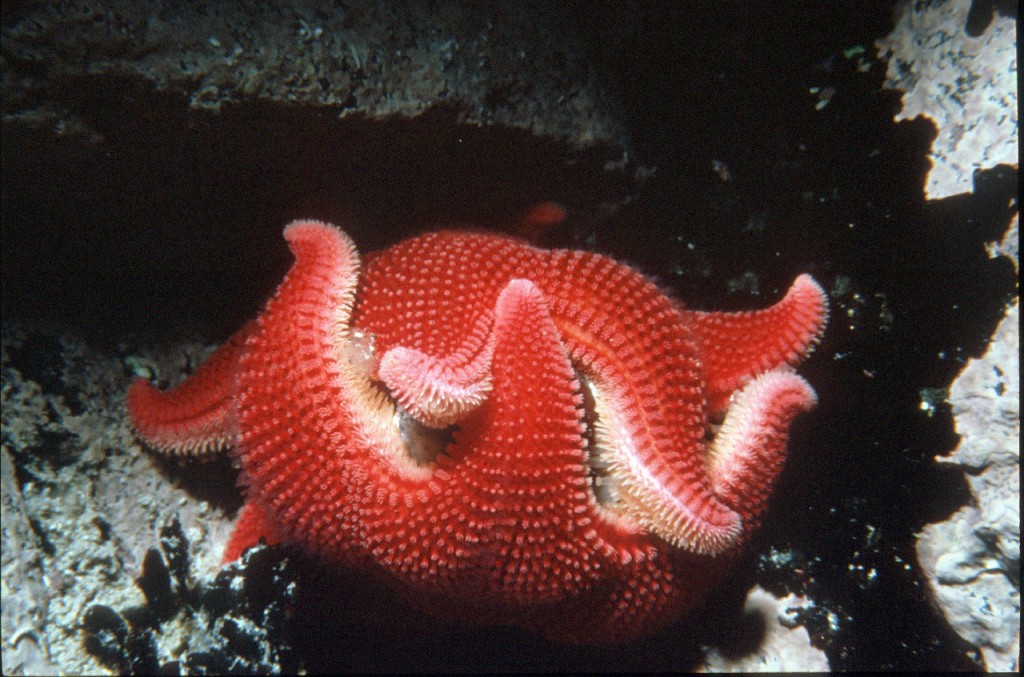Study reveals most biologically rich island in Southern Ocean
The first comprehensive study of sea creatures around the sub-Antarctic island of South Georgia reveals a region that is richer in biodiversity than even many tropical sites, such as the Galapagos Islands. The study provides an important benchmark to monitor how these species will respond to future environmental change.
Reporting this week in the online journal PLoSONE, the team from British Antarctic Survey (BAS), funded by the British Government’s Darwin Initiative and the South Georgia Heritage Trust, describe how they examined over 130 years of polar records. About 1500 species were recorded showing South Georgia and its surrounding islands to be the richest area for marine life in the Southern Ocean.
Lead author Oliver Hogg from BAS says,
“The biodiversity of South Georgia exceeds that of its nearest rivals such as the Galapagos and Equador in terms of the number of species inhabiting its shores. During the breeding season it hosts the densest mass of marine mammals on Earth.”
Specimens were collected from scientific cruises, fisheries vessels and by scuba divers from the seas around South Georgia, famous for great polar explorer Sir Ernest Shackleton’s expedition. Species identified include sea urchins, free-swimming worms, fish, sea spiders and crustaceans. Most are rare and many occur nowhere else on Earth.

The near-surface waters around South Georgia are some of the fastest warming on Earth so this study provides a framework to identify ecologically sensitive areas and species, identify conservation priorities and monitor future changes.
Oliver Hogg continues,
“This is the first time anybody has mapped out the biodiversity of a small polar archipelago in the Southern Ocean. If we are to understand how these animals will respond to future change, a starting point like this is really important.”
Ends
Issued by the British Antarctic Survey Press Office
Heather Martin, Tel: +44 (0)1223 221 226; mobile: 07740 822229; email: hert@bas.ac.uk
Audrey Stevens, Tel: +44 (0) 1223 221 230; email: auev@bas.ac.uk
Authors:
Oliver Hogg, British Antarctic Survey Tel: ++44 (0) 1223 221212; email: olgg@bas.ac.uk
Dave Barnes, British Antarctic Survey Tel: ++44 (0) 1223 221613; email: d.barnes@bas.ac.uk
Notes for editors:
Stunning broadcast-quality footage and stills of South Georgia, the animals that inhabit it and seas around are available from the BAS Press Office or at the following link:
ftp://ftp.nerc-bas.ac.uk/pub/photo/PR_5-2011
All images must be credited to British Antarctic Survey
Highly diverse, poorly studied and uniquely threatened by climate change: an assessment of marine biodiversity on South Georgia’s continental shelf by Oliver T Hogg, David K. A Barnes and Huw J. Griffiths is published online in PLoSONE
The sub-Antarctic island of South Georgia is one of the remotest outposts of Great Britain’s overseas territories. Some 1445 species were recorded from 17,000 specimens forming part of this study. This research involved the study of over 25,000 records from polar explorations dating back to Victorian times.
Oceanographic measurements near South Georgia span most of the last century. Over the 81-year period (1925–2006) we observe significant warming a mean increase of 0.9°C in January and 2.3°C in August in the top 100m of the water column, but much less of a warming at 200m. However these warming levels are much greater than reported elsewhere in the Southern Hemisphere.
The temperature of the ocean around Antarctica has increased by an average of 1°C in the last 50 years. The atmospheric temperature on the Antarctica Peninsula has increased by 2.5°C over the same time and is one of the most rapidly warming areas on the planet.
The Cambridge-based British Antarctic Survey (BAS) is a world leader in research into global environmental issues. With an annual budget of around £45 million, five Antarctic Research Stations, two Royal Research Ships and five aircraft, BAS undertakes an interdisciplinary research programme and plays an active and influential role in Antarctic affairs. BAS has joint research projects with over 40 UK universities and has more than 120 national and international collaborations. It is a component of the Natural Environment Research Council.
The Darwin Initiative assists countries that are rich in biodiversity but poor in financial resources to meet their objectives under one or more of the three major biodiversity Conventions: the Convention on Biological Diversity (CBD); the Convention on International Trade in Endangered Species of Wild Flora and Fauna (CITES); and the Convention on the Conservation of Migratory Species of Wild Animals (CMS), through the funding of collaborative projects which draw on UK biodiversity expertise.
The South Georgia Heritage Trust (SGHT) aims to work with all who wish to preserve South Georgia’s natural and historical heritage for future generations – to redress the damage to its environment done in the past, and to preserve the human heritage of the island which so clearly shows the best and worst of humanity.
